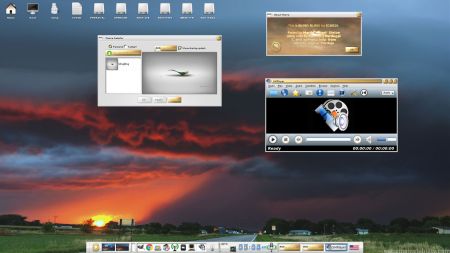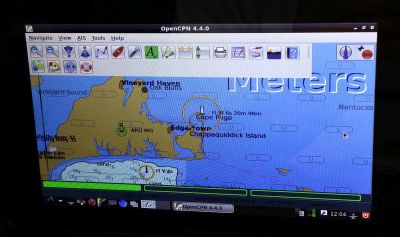 I have made a new version of ExTiX – The Ultimate Linux System. I call it ExTiX 17.0 KDE Live DVD. (The previous version was 16.4 from 160731). The best thing with ExTiX 17.0 is that while running the system live (from DVD/USB) or from hard drive you can use Refracta Tools (pre-installed) to create your own live installable Ubuntu system.
I have made a new version of ExTiX – The Ultimate Linux System. I call it ExTiX 17.0 KDE Live DVD. (The previous version was 16.4 from 160731). The best thing with ExTiX 17.0 is that while running the system live (from DVD/USB) or from hard drive you can use Refracta Tools (pre-installed) to create your own live installable Ubuntu system.
ABOUT
ExTiX 17.0 KDE DVD 64 bit is based on Debian 8.6 Jessie/Debian 9 Stretch and Ubuntu 16.10. The original system includes the Desktop Environment Unity (Ubuntu). After removing Unity I have installed KDE Frameworks 5.26.0 with KDE 4.16. KDE Frameworks are 60 addon libraries to Qt which provide a wide variety of commonly needed functionality in mature, peer reviewed and well tested libraries with friendly licensing terms.
The system language is ENGLISH.
Used KERNEL
My special kernel 4.9.0-11-exton corresponding Kernel.org’s kernel 4.9 – latest as of 161221. You can download “my” kernel if you want to use it in another Ubuntu/Debian system. Extract ubuntu-kernel-64bit-4.9.0-11-exton.zip with the command unzip ubuntu-kernel-64bit-4.9.0-11-exton.zip.
What’s new in Linux kernel 4.9?
NEWS ABOUT ExTiX 17.0 Build 161221 with the KDE Desktop environment and Refracta Tools
1. ExTiX KDE is based on Ubuntu 16.10 Yakkety Yak. KDE 4.16 is used as Desktop environment. All packages have been updated to the latest version by 161221. Kernel 4.9.0-11-exton is used. (Kernel.org‘s latest kernel 4.9).
2. Google Chrome is used as Web Browser, which makes it possible to watch Netflix movies. It is not possible in Firefox (in Linux).
3. I have also installed BlueGriffon Web Editor. BlueGriffon is a new WYSIWYG content editor for the World Wide Web. Powered by Gecko, the rendering engine of Firefox, it’s a modern and robust solution to edit Web pages in conformance to the latest Web Standards. Only to be compared with Dreamweaver. (In my opinion).
4. Other included important/useful packages are: LibreOffice, Thunderbird, GParted, Brasero, SMPlayer, GCC and other compilation tools so that you can install packages from source. Furthermore “all” multimedia codecs. Everything the average Linux user could wish for I would say.
5. The best thing with ExTiX 17.0 is that while running the system live (from DVD/USB) or from hard drive you can use Refracta Tools (pre-installed) to create your own live installable Ubuntu system.
Screenshot 1 of ExTiX 17.0 Desktop – KDE 4.16 – Netflix running
Screenshot 2 of ExTiX 17.0 Desktop – Synaptic running
Screenshot 3 of ExTiX 17.0 Desktop – Samba running








